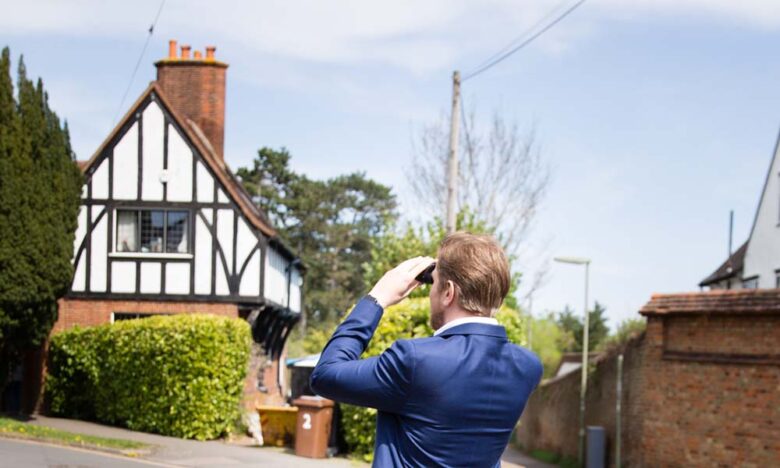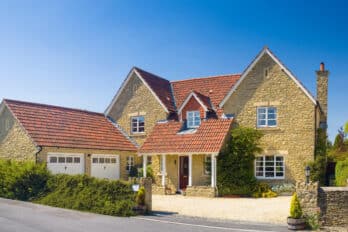
The Latest Technology in Surveying
As in so many areas of our lives, technology is significantly impacting the world of surveying. At Novello Chartered Surveyors we are leading the edge of this revolution, leveraging the latest technology to deliver clearer, more detailed building surveys with less impact on the homeowner. So what technology is already being utilised by surveyors, and what could be next?
Surveying Methods of the Past
To see how much the art of surveying has changed in recent years, it’s worth looking at how surveys used to be carried out. The process of surveying a property used to be a very analogue experience, with pen, paper and tape measure being the key tools. ‘Technology’ would have come in the form of a damp meter and a camera. In the past couple of decades, thermographic cameras have come onto the scene, enabling a wide range of building performance issues and defects to be identified, such as poorly installed insulation.
Recent years have seen the utilisation of mobile technology such as tablets to quickly record and share data and images and more reliance on cloud services to access that information on the move. While this has helped to improve survey quality and efficiency, this was only the start of the rapid adoption of technology that is helping the sector evolve at pace.
Surveying Technology Available Right Now
In recent years, we’ve witnessed a growing use of mobile technology, such as tablets, to efficiently record and share data and images, along with an increased reliance on cloud services for easy access to information on the go. While these advancements have already enhanced survey quality and efficiency, they mark just the beginning of a rapid technological evolution within the sector, with innovations like drones and infrared technology further driving progress. At Novello Chartered Surveyors, we are leading the way with the latest technologies to provide our clients with exceptional service, and here’s how we’re doing it:
Drones
Drones have also been a major leap forward for surveyors and are starting to be used more widely across the industry. This method allows surveyors to gather detailed and accurate information about a site from above, offering a bird’s-eye view that traditional methods cannot easily achieve. Drones are equipped with high-resolution cameras and sensors, enabling them to capture thousands of images across a survey site. These images are then processed using sophisticated software to create highly detailed 2D maps, 3D models, and topographical data. The precision of drone surveying is unmatched, often delivering data points within a few centimetres of accuracy. Novello surveyors are given drone training, so they are not only RICS-qualified but also Civil Aviation Authority certified and authorised drone operators.
Why Drone Surveys Matter
The importance of drone surveying in modern surveying practices cannot be overstated. Here are some of the key benefits:
1. Enhanced Accuracy and Detail: Drones can capture vast amounts of data in a short period, providing detailed and accurate representations of the survey area. This level of detail is crucial for creating precise maps, models, and measurements that are essential in planning, design, and construction processes.
2. Cost Efficiency: Drone surveying significantly reduces the time required to survey large areas, which in turn lowers the cost. The ability to quickly and accurately survey difficult-to-access areas without the need for extensive manpower further enhances cost savings.
3. Improved Safety: Surveying can often involve working in hazardous environments, such as construction sites or areas with difficult terrain. Drones mitigate these risks by allowing surveyors to conduct surveys from a safe distance, thus reducing the potential for accidents or injuries.
4. Speed and Efficiency: Drones can cover large areas quickly, capturing data that would take a ground-based survey team much longer to collect. This speed translates into faster project turnaround times, which is particularly beneficial in fast-paced industries like construction and land development.
5. Complex Structure Analysis: When surveying complex roofing structures with multiple pitches the use of drones allows the surveyor to quickly and safely assess the condition of the whole roof which would otherwise be difficult to assess due to access restrictions. The drone also allows for inspection of multiple chimney stacks and guttering systems around the property with ease allowing for photo and videographic evidence of the condition to be collected. This speed leads to faster project completion.
Infrared Thermal Imaging
Thermal imaging, also known as thermography, is a valuable tool in aerial inspection services, providing a visual representation of heat energy emitted from buildings. By analysing temperature variations, thermal imaging can quickly identify potential issues such as abnormal heat patterns, which often indicate underlying problems. This technology is not only efficient but also cost-effective, as it allows for early detection, reducing the likelihood of more significant damage and expenses.
Benefits of Infrared Thermal Imaging:
1. Uncover Hidden Issues: Detects potential defects like air leaks, water ingress, and heat loss in buildings that are not visible to the naked eye.
2. Accessible in Challenging Environments: Effective in low-light and low-visibility conditions, making it ideal for confined or hard-to-access areas.
3. Non-Invasive: Provides a detailed inspection without physical contact, ensuring safety and efficiency.
4. Cost Savings: Early detection often results in less costly repairs and maintenance.
Thermal imaging has become increasingly popular in building surveying, where it is used to detect energy deficiencies and building defects, making it an essential tool for conflict resolution and quality assurance in construction and maintenance.
Surveying Technology of the Future
Of course, innovation in the surveying sector isn’t going to stop there. As 5G becomes more widely deployed, you could end up watching your survey in real time, asking questions and requesting further investigations as issues are found.
You could even choose a virtual home survey, where surveyors utilise video, cloud and geolocation technology to connect with clients remotely for a super-quick service.
Image recognition software could also play a role in the future survey, offering the opportunity to analyse data and pinpoint potential defects.
The Novello Approach
It’s evident that innovation in the industry is far from over, and new ways to enhance service quality will continue to emerge. At Novello, we are committed to leveraging technology to deliver superior service and elevate the customer experience. This commitment is central to our distinctive Private Client Surveying service, a tailored solution that equips you with the essential advice and information needed to purchase a home confidently and stress-free. Whether it’s keeping you informed through advanced communication and collaboration tools or using high-definition drones and state-of-the-art equipment to meticulously inspect every aspect of a property, we aim to provide one of the most thorough and informative building surveys available. By harnessing technology, we can quickly and accurately collect on-site data, ensuring that you receive a high-quality report without delay.

